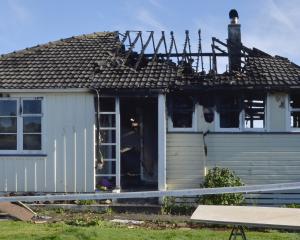The fire in the Waituna Wetlands Scientific Reserve, administered by the Department of Conservation, consumed mature manuka trees and wetland plants and would have killed birds and skinks, Doc's Awarua Wetlands project co-ordinator Polly Bulling said yesterday.
"Years of restoration effort have gone in one night."
The fragile wetland environment, which covers about 20,000ha including the Waituna lagoon, was nationally and internationally important for wildlife, she said.
It was one of the largest remaining wetland complexes in New Zealand and home to more than 80 different species of birds, and 16 nationally and regionally uncommon plants as well as lizards and a prolific range of insects.
"We know we will have lost birds and skinks. But we won't be able to establish the impact until it is safe for us to get in there."
The fire began about 5.30pm on Monday. About 25 firefighters and three helicopters with monsoon buckets fought the blaze until 11pm, Southern Rural Fire Authority communications officer Sally Chesterfield said yesterday.
Another 25-strong crew began at 6.30am yesterday.
A control base was set up on the edge of Awarua Bay and helicopters ferried men and equipment to the fire perimeters between 1km and 5km away.
The fire was out by yesterday afternoon, Miss Chesterfield said. Firefighters would spend one or two days checking the perimeters and damping down hot spots.
The cause of the fire was not known.
Ms Bulling said it began within the reserve and not on neighbouring farmland.
Miss Chesterfield said there was a significant fire in the wetlands about every two years.
While this fire was extensive, it was put out more quickly than some previous fires. The wetland vegetation sat on peat and fires which got into the peat burned for a long time and were difficult to extinguish, she said.
"We have been lucky this time.
"Because [October was] so wet, the water table is high and the fire was easier to control. Also, the wind was not as strong this time as it can be."












